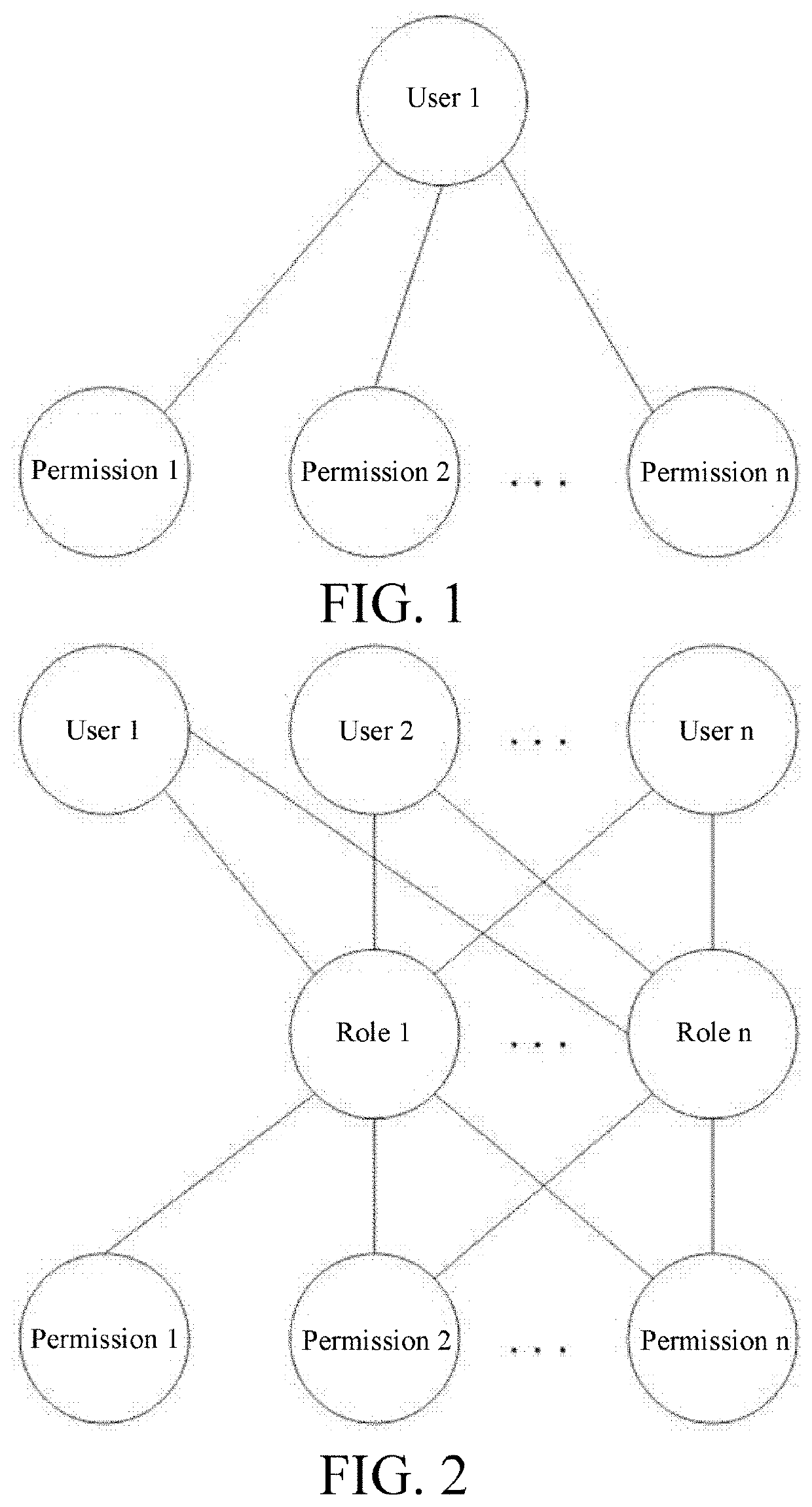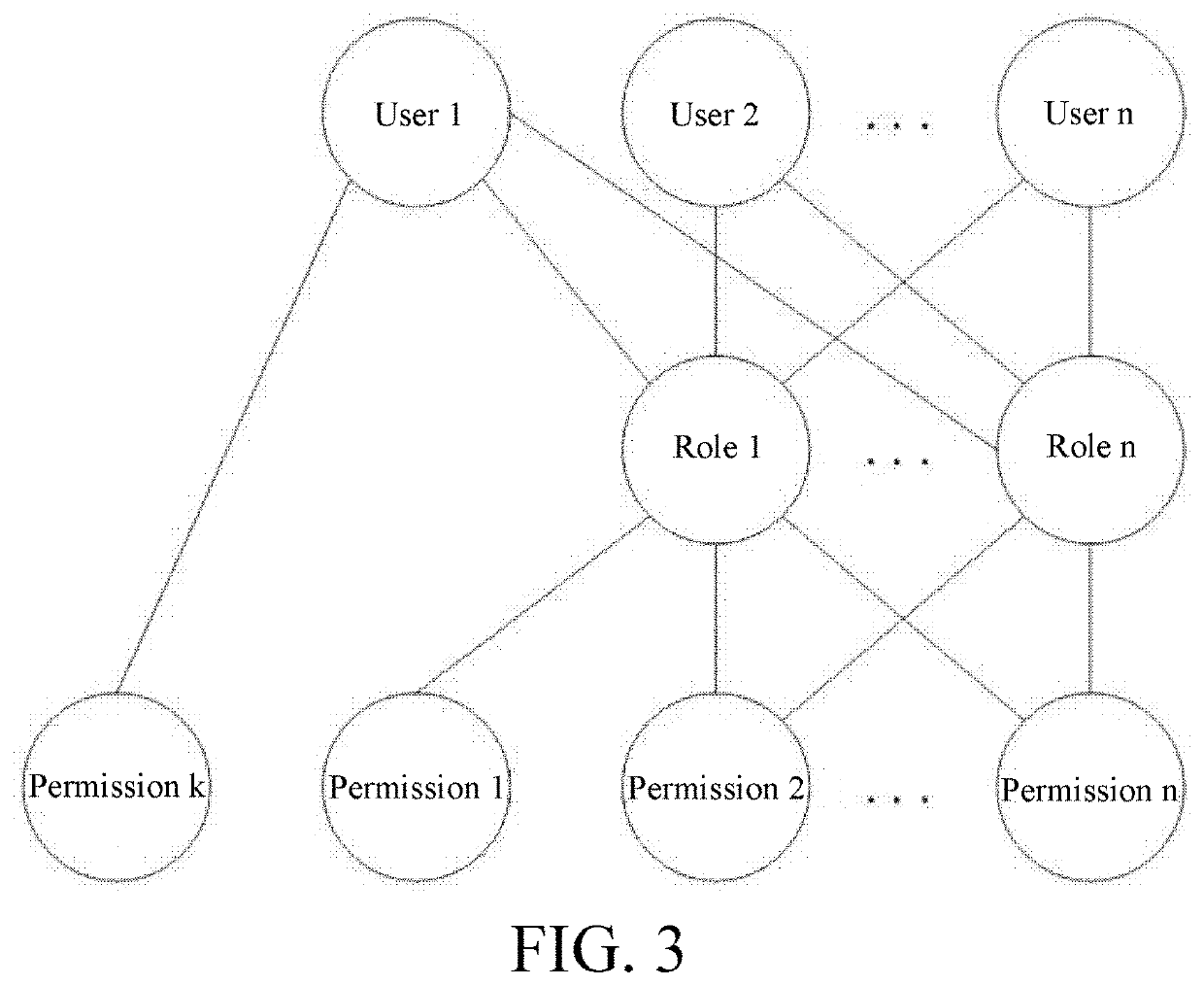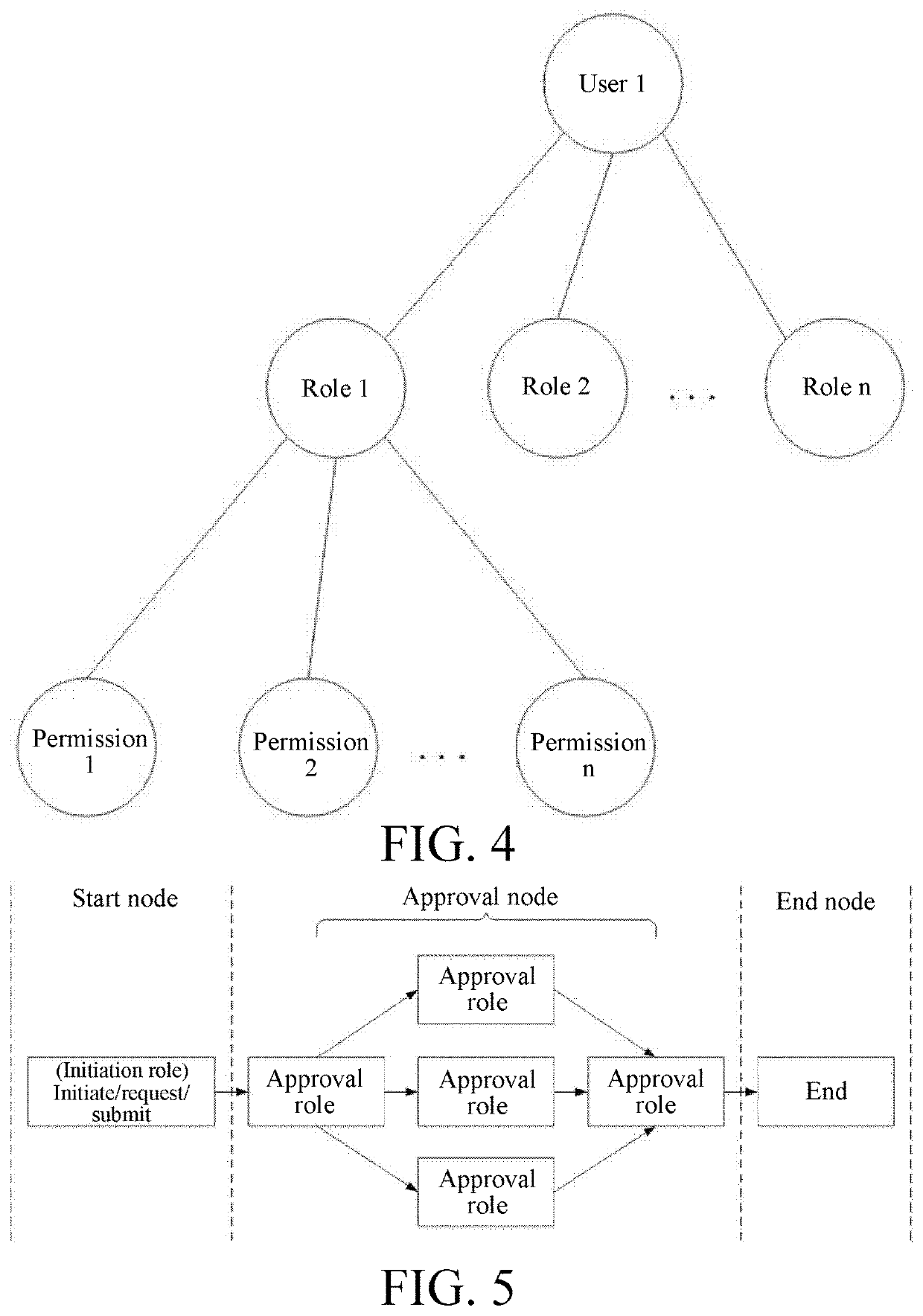Method for setting approval procedure based on base fields
a technology of base fields and approval procedures, applied in the field of system process setting personnel, can solve the problems of low security, too restrictive, and high flexibility of conventional discretionary access control, and achieve the effects of simple, clear, and easy operation
- Summary
- Abstract
- Description
- Claims
- Application Information
AI Technical Summary
Benefits of technology
Problems solved by technology
Method used
Image
Examples
embodiment 1
[0048]A method for setting an approval process based on basis fields includes a step of determining a basis field for an approval form, a step of creating an approval process, and a step of automatically relating an approval process according to an approval form submitted by a user. The step of determining a basis field for an approval form includes: determining a basis field for each form that needs workflow approval, or determining a basis field for each form for which workflow approval needs to be executed according to the basis field, where only one basis field can be determined for one approval form during the same period. The step of creating an approval process includes the following steps: S1: selecting (or setting) a form corresponding to the approval process, where one form corresponds to one or more approval processes; S2: selecting a basis field for the approval process, where one basis field can be selected by one or more approval processes, and the basis field is a sub...
embodiment 2
[0055]The field value set includes a null field value. An approval process corresponding to a form in which the field value of the selected basis field is null is set when approval processes are set, and when content of the basis field in the approval form (form data) submitted by the user is null, this approval process is used for approval.
[0056]For example, when a contract is submitted to be approved, if the value of the contract signing department field in the contract form (form data) is null (because the contract signing department of the contract form is not a mandatory field), an “approval process, of which the field value set of the contract signing department includes null, under the determined basis field in the contract form” approves the submitted contract form.
embodiment 3
[0057]When the selected basis field only corresponds to a unique approval process, there is a field value option “all” in the field value set of the selected basis field of the approval process and “all” is selected. If the determined basis field in the approval form (an approval form corresponding to the form data) submitted by the user is the same as the selected basis field of the approval process, the approval process is used for approving the submitted approval form (form data) regardless of the field value of the basis field in the approval form (form data) submitted by the user, and also used for approving subsequent newly-added field values of the basis field (that is, all processes related to the newly-added field values of the basis field are this approval process).
[0058]For example, “contract signing department” on a contract form is determined as the basis field (current basis field) of the form, and only one approval process selects the “contract signing department” as ...
PUM
 Login to View More
Login to View More Abstract
Description
Claims
Application Information
 Login to View More
Login to View More - R&D
- Intellectual Property
- Life Sciences
- Materials
- Tech Scout
- Unparalleled Data Quality
- Higher Quality Content
- 60% Fewer Hallucinations
Browse by: Latest US Patents, China's latest patents, Technical Efficacy Thesaurus, Application Domain, Technology Topic, Popular Technical Reports.
© 2025 PatSnap. All rights reserved.Legal|Privacy policy|Modern Slavery Act Transparency Statement|Sitemap|About US| Contact US: help@patsnap.com



